Scientists in South Africa have made an amazing discovery in the globe’s biggest meteor impact crater, the Vredefort Crater . While experts were studying the unique geology of the crater a number of ancient engravings were discovered. The carved images are helping researchers have a better understanding of the first inhabitants of Southern Africa.
Two billion years ago, a huge asteroid traveling at over 40,000 miles per hour hit the area in what is now the Free State province of South Africa. IFL Science reports that it is the “largest and second oldest confirmed impact crater” on Earth.
The crater is 300 miles (530 kilometers) wide and once had a distinctive shape but it was eroded by primeval geological processes. The asteroid was about 10 miles (16 kilometers) wide and it left a crater that is larger than the more famous site at Chicxulub (Mexico), whose impact resulted in the extinction of the dinosaurs.
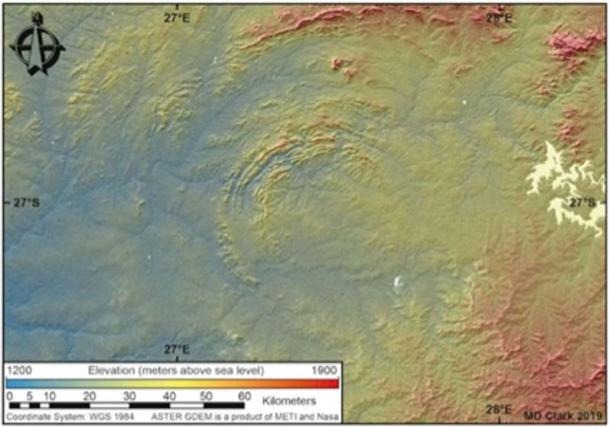
Some of the Vredefort Crater’s multiple rims have eroded away, but from space, what is left is clear. (Dr. Matthew Huber / University of the Free State )
The Amazing Geology of Vredefort Crater
A team of international geologists and researchers from South Africa’s University of the Free State were investigating the crater. It is very important for geologists because it allows them to study a massive meteor-crater without having to leave Earth. Furthermore, it provides them with “a rich source of information about ancient rock formations that would otherwise have been lost,” according to IFL Science .
The impact of the asteroid resulted in molten material capturing rocks, that have been eroded elsewhere in the world, and this makes the crater very important for geologists. Moreover, it is thanks to the meteorite that some of the richest goldfields in the world are located nearby. These ultimately led to the development of modern Johannesburg.
The impact some 2 billion years ago created some very unusual geological formations . The most distinctive are the ‘Granophyre Dykes’, “long, narrow structures that are 6 miles (9.7 kilometers) long and 16 feet (4.9 meters) wide,” according to Newsweek. These are long snakelike lines of rocks that were made from subterranean molten rock . How the impact formed the dykes is one of the great mysteries of geology, despite them being studied for over a century.
The granophyre dykes measure 6 miles (10 kilometers) long but are only a few meters wide. (Dr. Matthew Huber / University of the Free State )
In the course of a study, Matthew Huber, of South Africa’s University of the Free State and his colleagues were investigating the formations when they noted a number of remarkable engravings in one of the dykes, known as the ‘Rain Dyke’.
Carved Images of Animals Found in the Vredefort Crater
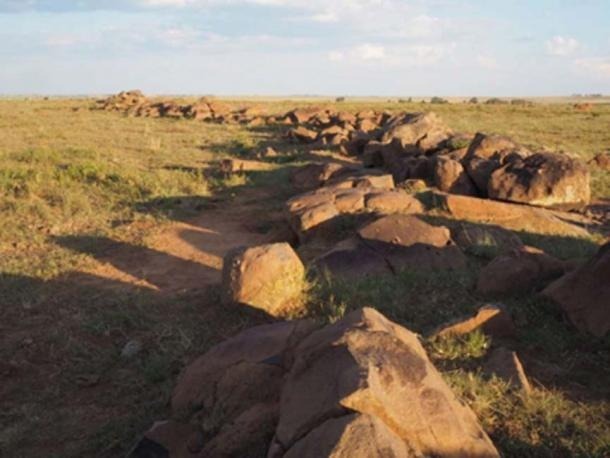
The carvings are all of animals and they include representations of a hippopotamus, horses, and antelopes. They were made by chipping away the surface of the rock and they are all realistic representations, albeit in several styles, indicating that they were carved over many years.
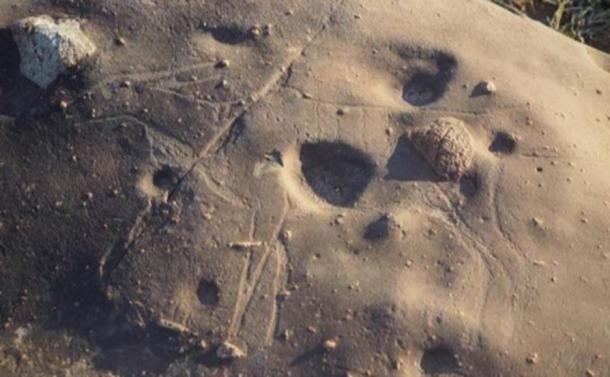
Carvings of hippopotamus, horses, and antelopes in the Vredefort impact crater. (Dr. Matthew Huber / University of the Free State )
The rock-art discovered at the ‘Rain Snake’ Dyke is assessed to be at least 8,000 years old. This is “believed to have had spiritual significance relating to rain making,” according to Newsweek. The dykes have long been utilized by the Koi-San people for their ceremonies and rituals. They are regarded as the original inhabitants of Southern Africa and many of them still live like their ancient hunter-gatherer ancestors, especially in the desert areas of Namibia and Botswana.
Look closely and the faint carving of an antelope emerges from the rock here. (Dr. Matthew Huber / University of the Free State )
Khoi-San Rain-Making Rituals
Newsweek reports that the “area around these dykes is littered with artifacts and carvings from the Khoi-San people.” It appears that for millennia they believed that the crater was of spiritual and religious significance. Moreover, the dykes with their weaving lines of stones were thought to represent divine snakes .
In San mythology, the snake was thought to be associated with rain. This led Khoi-San to believe that the Rain Snake, which is near the Vaal River, was a sacred site that could be utilized for ceremonies to persuade the deities to provide rain during droughts.
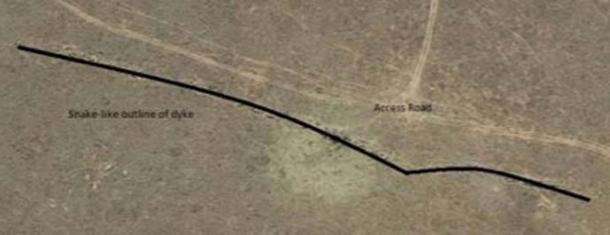
Image showing the outline of the dyke where the carvings were found. (Dr. Matthew Huber / University of the Free State )
Newsweek quotes Huber that “the animals carved into the dyke are all associated with the rain-making mythology of the San.” While the style of the art may have changed over time, they all had one constant, in that they are all were associated with rain and water. The rock art was possibly created to make the rain-making rituals and ceremonies more effective.
The site is now being investigated by archaeologists, including Shiona Moodley and Jens Kriek who are trying to determine how the site was used by early people. A computer model of the dykes is being developed and this will include reference points to the images that were carved some 8,000 years ago, thus facilitating further study.
Researchers in particular hope that the rock art can help them to understand the beliefs and worldview of the first people of Southern Africa. Huber and his colleagues also hope to visit new areas of the crater and they expect to find more examples of rock-art.
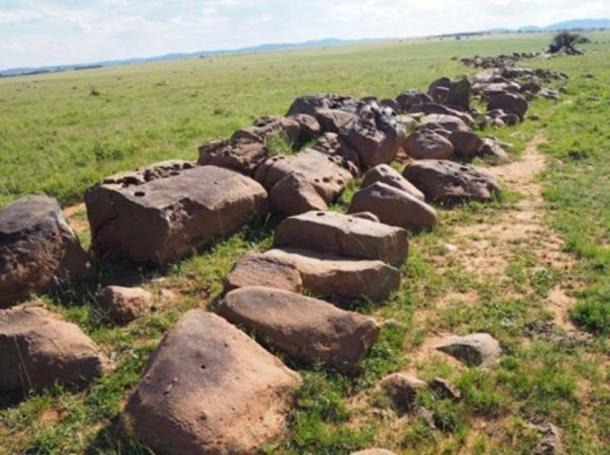
Image of the dyke from the ground. (Dr. Matthew Huber / University of the Free State )
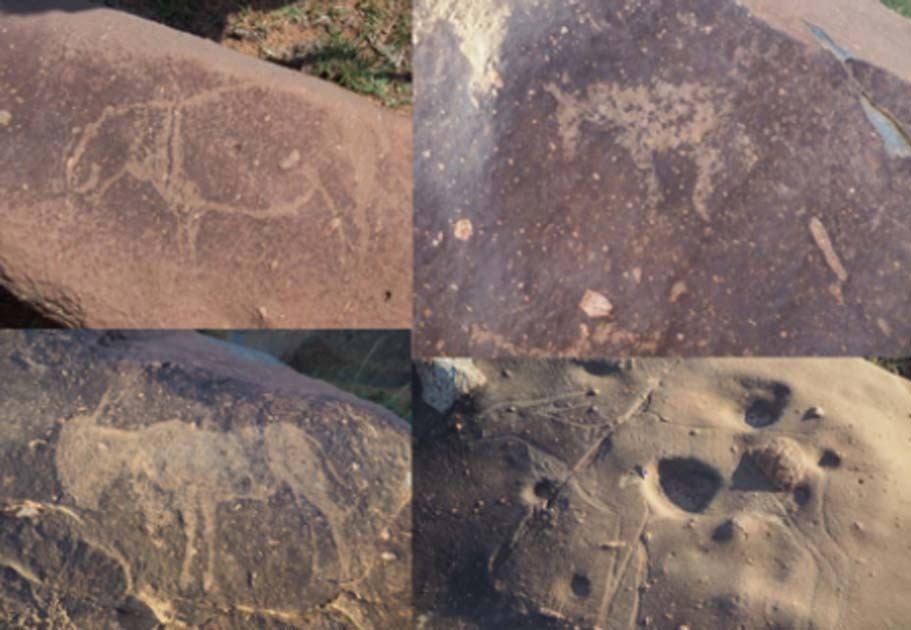
Leave a Reply